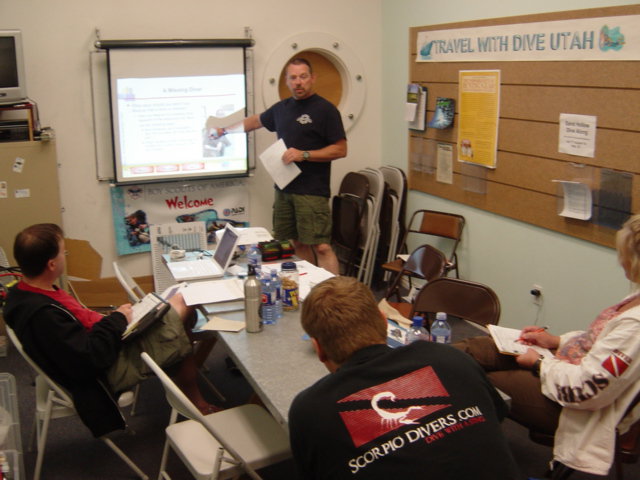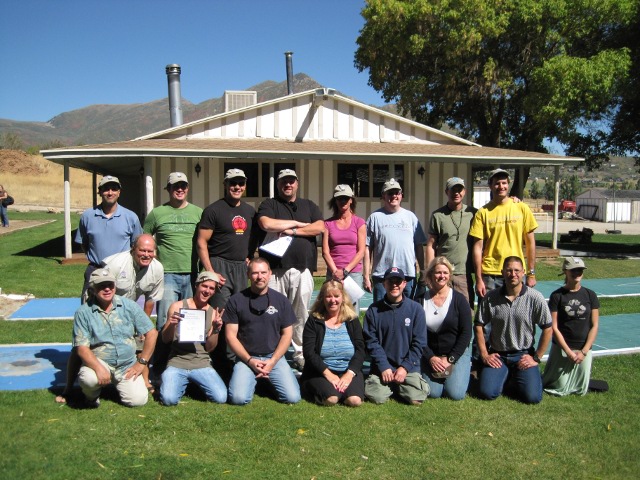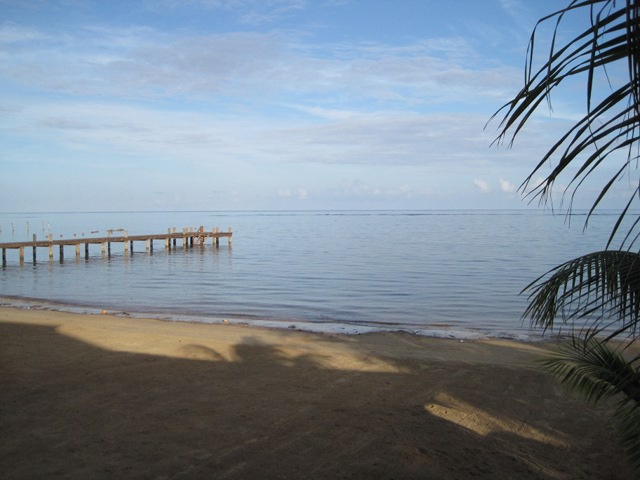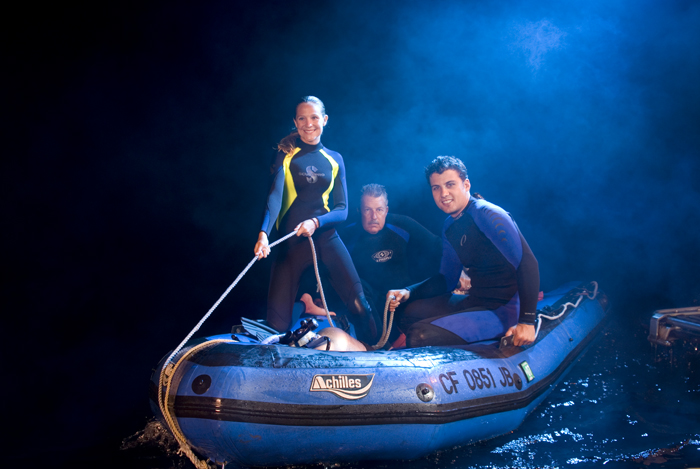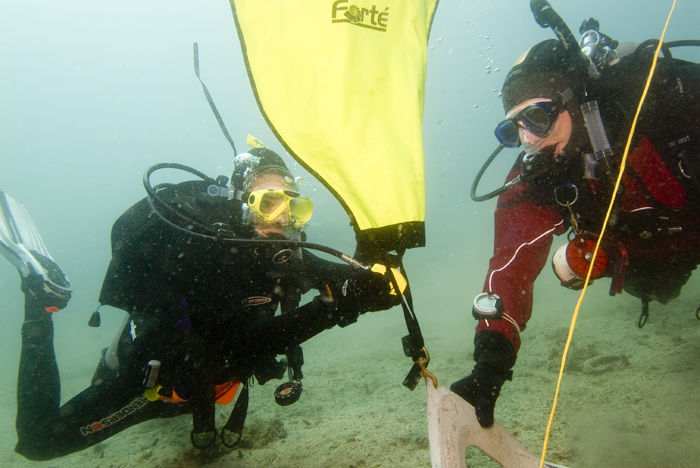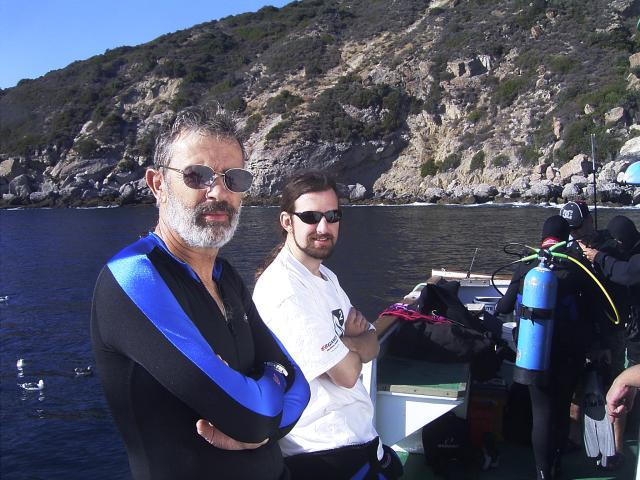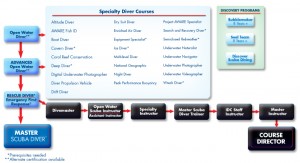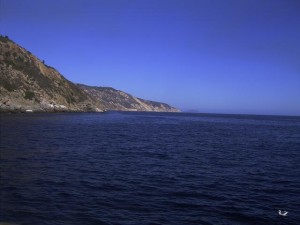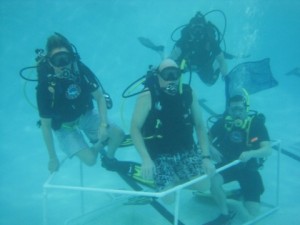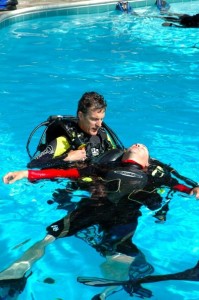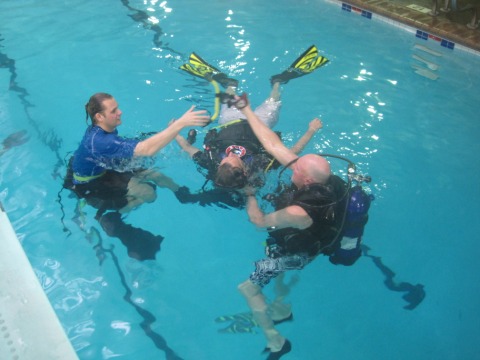Recently, I’ve talked about the Rescue and Divemaster courses. If you’re already a Divemaster and are looking to continue on, or you’re checking out the rest of the career development path, now we’re going to talk about PADI Instructor-level training.
Like every industry, scuba diver education has it’s own set of acronyms. Let’s define a few:
- AI Assistant Instructor
- OWSI Open Water Scuba Instructor
- IDC Instructor Development Course
- IE Instructor Exam
Let’s take a look at what you can do at the two instructor levels and how you get there.
AI’s can do a limited amount of independent teaching, with more available if an Instructor is directing the AI or supervising the course directly. Specifically, AI’s can do everything a Divemaster can plus teach the Project AWARE, AWARE-Coral Reef Conservation and Peak Performance Buoyancy courses. Peak Performance Buoyancy requires that an instructor be available for consultation during the program. An AI can also evaluate some surface skills in the Open Water Diver course. When a PADI Instructor is supervising a course, the AI can also teach skills and classroom sessions for many courses.
OWSI is the entry-level instructor rating. At this level, you can teach PADI Scuba Diver, PADI Open Water Diver, Adventure Diver, Advanced Open Water, Rescue, and Divemaster plus everything a Divemaster and AI can teach. Also, an OWSI can conduct Discover Scuba Diving experiences in an open water setting.
How do you get to these two ratings? Not surprising, but there is an AI course and an OWSI course. There are a couple of ways to put this together:
Option 1:
As a PADI Divemaster, you can enroll in a PADI Assistant Instructor course directly. An AI course can be taught by an IDC Staff instructor (an assistant for instructor-level training) or by a PADI Course Director (an instructor-trainer). AI Programs can be taught at PADI 5-Star Dive Centers or Resorts or higher. For the PADI OWSI program, it needs to be conducted by a PADI Course Director and must be conducted at a PADI 5-Star Instructor Development Center, 5-Star Instructor Development Resort or a PADI Career Development center. To enroll in an OWSI program, you need to be a PADI Assistant Instructor or an Instructor with another training agency.
Option 2:
As a PADI Divemaster you can enroll in a PADI Instructor Development Course, IDC. The PADI IDC is a composite of the AI and OWSI programs run as a single program.
As with other programs, there are some online options to complete some of the training. I highly suggest that all Instructor candidates use the eLearning program for a couple of reasons: it’s exceptionally well done (they deliver some of the material better than I would) and it gives you, the Instructor Candidate, a good feel for how eLearning can be useful to you when you’re teaching. These modules can be taught live for reasons such as the material isn’t available in a language you understand or you lack Internet connectivity and ability to use the eLearning system. The downside of the live presentation is that it takes about two full days. The online program typically takes less than a day.
Here are the topics covered in the eLearning portion of PADI Instructor Development:
- Learning, Instruction and the PADI System
- General Standards & Procedures Part I
- Risk Management
- Marketing Diving
- Start Diving
- Teaching PADI Specialty courses
- Business of Diving
- Keep Diving
- How to teach the Recreational Dive Planner (RDP)
These topics are required for Instructor candidates and for candidates just completing an OWSI Program. Only a few are required for the AI course, but if you’re paying for the eLearning program, you should complete them all.
After the eLearning, there are several live presentations, discussions and workshops, including:
- Course Orientation*
- Developing Knowledge Development Presentations*
- Teaching in Confined Water*
- Conducting Open Water Training Dives*
- General Standards and Procedures Part II
- Open Water Diver
- Adventures in Diving
- Rescue Diver
- Divemaster
- Risk Management
The starred courses are required for the AI program. One thing that should stand out is that the full IDC or an OWSI program introduces you to the four core certification programs as well as furthering your knowledge of General Standards and Procedures and Risk Management.
That’s the academics. You have to practice teaching in all three venues: classroom, pool and open water. You’ll also demonstrate your knowledge and skills with written exams and a skill circuit in the pool. To get through all of this, you’ll need a lot of materials. A list of required materials is available here in my IDC Stuff page.
How long does it take? Here are the minimum number of days:
AI (with eLearning): 2 days
OWSI (with eLearning): 3 days
IDC (with eLearning): 5 days
Without eLearning, add two days to each of those.
Here’s a typical IDC schedule:
Following your AI course, if you’ve met all of the course requirements, your IDC Staff Instructor or Course Director will help you complete your application to become an Assistant Instructor. After completing your OWSI or IDC, you’ll need to attend a 2-day IE, Instructor Exam. This is an objective evaluation of your knowledge and skills conducted by an examiner from PADI. The awesome part of this is that you can take an IE almost anywhere in the world; the standards and requirements are the same everywhere. To simplify logistics, most Course Directors arrange their OWSI and IDC programs to match the calendar of IE’s closest to them. For example, I often conduct PADI Instructor Development Courses the week before an IE to simplify things.
Now, while it is possible for you to be prepared with the bare minimum of presentations and training, I prefer to add some workshops to my PADI IDC programs. These include:
- Project AWARE workshop: we spend time looking at the Project AWARE and Coral Reef Conservation curricula and also spend time looking at how to process student certifications and the required paperwork and record keeping.
- Kids program workshop: If you want to teach kids, this is the way to go. We take a look at the Bubblemaker and Seal Team programs and complete one or more Seal Team aquamissions in the pool so you’re familiar with the programs.
- Emergency Oxygen Provider Instructor training: This is a PADI Specialty Instructor training course to teach you how to offer the Emergency Oxygen Provider specialty. This course integrates with the Rescue Diver program, allowing you to add value to your Rescue courses. It also gets your students on the track towards Master Scuba Diver.
- Business of Diving workshop: What does it cost to teach a class? How much should I charge? How do I market the programs? What are my career goals? We take a look at all of these questions to make sure you are earning what you should and not selling yourself short.
Of course, there are a ton of details I can’t fit into this blog post. Feel free to contact me with questions and to check out my other pages on PADI Instructor Development.

